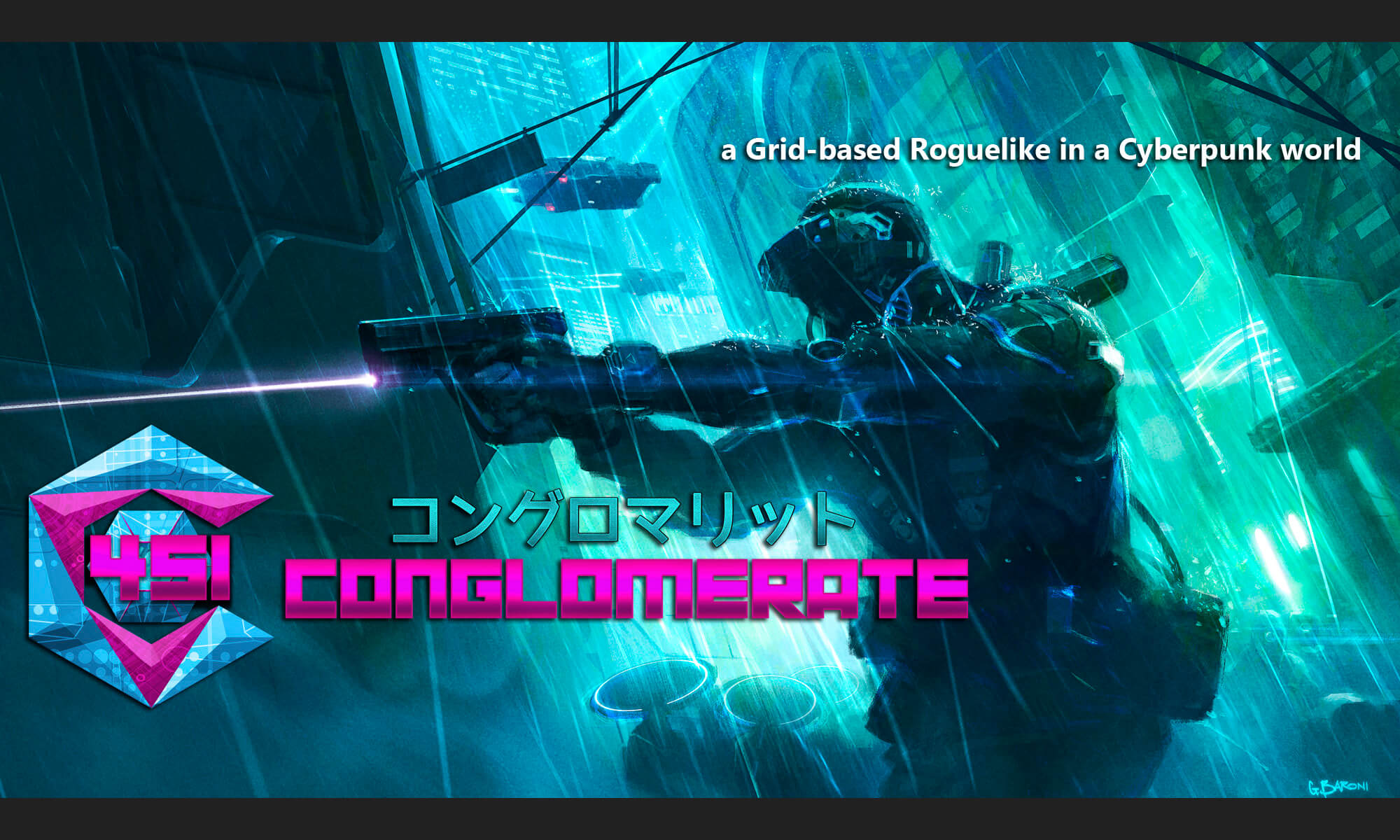
Note: This is an early access review played on version 0.8.6 of the game in December 2019.
The cyberpunk genre has always been a popular one amongst gamers, from the Deus Ex franchise to the upcoming (and very much anticipated) Cyberpunk 2077. It’s a setting that allows for interesting story and gameplay options. Conglomerate 451, created by Italian developer Runeheads, combines a cyberpunk atmosphere with a turn-based dungeon crawling experience reminiscent of Legend of Grimrock. It’s a nice way to mix up the dungeon crawler formula, but does it hold up as a gaming experience?
Conglomerate City is a bit of a mess narratively speaking, in particular, sector 451 (undoubtedly a nod to the Fahrenheit 451 novel) has been taken over by corrupt corporations and the rule of law has been essentially abolished. In desperation, the government has allowed agencies such as the one you run during the game to create cloned soldiers with modified DNA and cybernetics to try and restore order. Your task involves creating your soldiers, building squads and undertaking missions to destabilise the corporations in different areas of Sector 451.
The game is split between agency management and combat missions, in a similar way to X-COM or Darkest Dungeon. The agency management portion is one of the game’s stronger areas. You can clone as many base-level agents as you wish without cost, up to a certain cap. This is normally a good idea, as Conglomerate 451’s mechanics can be as unforgiving as the world in which it’s set. When one of your agents dies, there’s no bringing them back, and there’s no level restart option either, so if things go badly you can either push on or cut your losses. Your veteran troops can also pick up long term conditions or traumas that will affect their combat performance. There are ways to try and recover from these, but whilst they are recuperating you will need to make use of less experienced operatives.
You can upgrade your facility in various ways using the money and tech resources gathered from missions. Health research will allow you to create new and more advanced healing and detox tanks. Cloning tech will allow you to use DNA modification techniques, so you can create new clones with modified base stats, further encouraging you to raise and train new agents. Military and Cyber research will improve how your squads operate in combat missions. You can customise and upgrade each member of your roster, changing and upgrading their skills, adding upgrades called SPUs into slots on their equipment, and changing the plugins on their Cypher Decks to give them access to new combat hacking abilities. The breadth of customisation for both your facility and individual squad mates is impressive, and it sits in a nice position where more analytical players can make careful choices in each area to maximise potential, but simple enough that other players can be effective without having to fine tune every aspect of their squad or base.
The game definitely nails the Cyberpunk Aesthetic, with nice environment and model designs. The music is also worth a mention by itself, the background songs that play during the non combat sections gave me major Blade Runner vibes, with the tempo ramping up nicely during combat. There are a few nitpicks here, the English text and voice acting contains several mistakes, which, whilst understandable for a small developer, does somewhat mar the experience. The environment textures also feel a bit dated. On the plus side, for an early access title, the game ran smoothly and I did not encounter any crashes, and the only noteworthy bug was the occassional enemy NPC movement animation not playing correctly. Whilst the game is atmospheric, the story, at least in it’s current state, feels like wasted potential. I only had an occasional piece of dialogue or simple choice to make after returning from a mission, which meant that I didn’t feel like I was really affecting the city or the narrative in any way. As a point of fairness, the developers have story mode events on their development map for January 2020 (viewable on the Steam page), so this is one aspect that is likely to improve.
The out of combat management is impressive, but things falls down somewhat when it comes to combat missions. The combat system itself is competent, if a bit basic. The turn based combat is most similar to a game like Darkest Dungeon, without the positioning mechanics. When you encounter enemies on the map, turn based combat begins with combat order being determined by initiative. Each of your squad members can choose one of 4 abilities that were chosen before the mission started. Certain attacks and effects will combo together well, or have improved affects against certain unit types. There is also the option of using combat hacking, draining a portion of an agent’s battery power to have an effect on a target, normally a buff or debuff. The game continually reminded me of this option, but as batteries can also be used to restore shields and hack through doors, and combat hacking is used in place of a regular ability, I found that it was rarely worth using in a combat situation. There is a nice touch whereby you can use direct attacks to target certain body parts of an enemy to change hit chances and cause certain debuffs. For example, targeting an arm may reduce an enemies attack, or a leg may reduce movement or intiative, but I found that the penalties for hit chance for targeting limbs other than the torso were usually not worth the potential to cause a debuff. These are slight nitpicks in the combat, but the biggest issue is the missions themselves. The objectives and environments are too repetitive, and almost always boil down to finding an item or killing all of the enemies. The starting areas of a mission look almost the same each time, and involve finding the elevator to the second part of the level which contains your main mission objective. These latter parts of the levels are more varied, with the environments and enemy types changing based on what section of the city you are operating in, but combined with a lack of narrative and the fairly basic combat, the game effectively devolves into playing essentially the same mission over again with different squads. There are a few hacking mini games that can be done out of combat, but they add little to the experience other than an occasional distraction.
In its current early access state, Conglomerate 451 feels like a title with a solid premise, setting and foundation that ends up feeling functional rather than truly engaging. It’s not a game I could recommend in it’s current state. However, it’s important to take into account it’s unfinished status. Story and gameplay elements are being added to the game in the new year, and if they are enough to make the missions and story experience more engaging, Conglomerate 451 could be added to the list of early access success stories. If you enjoy the Cyberpunk setting or a dungeon crawler with roguelike elements, this is one to keep an eye on.







